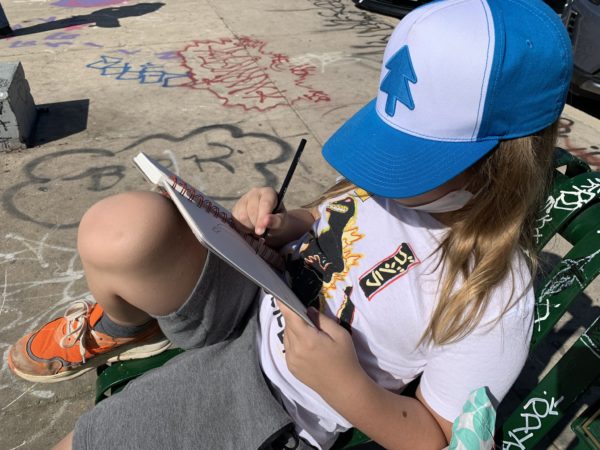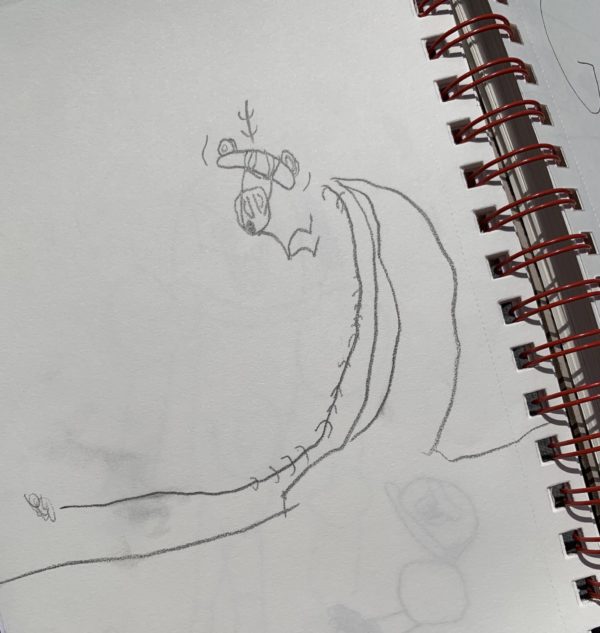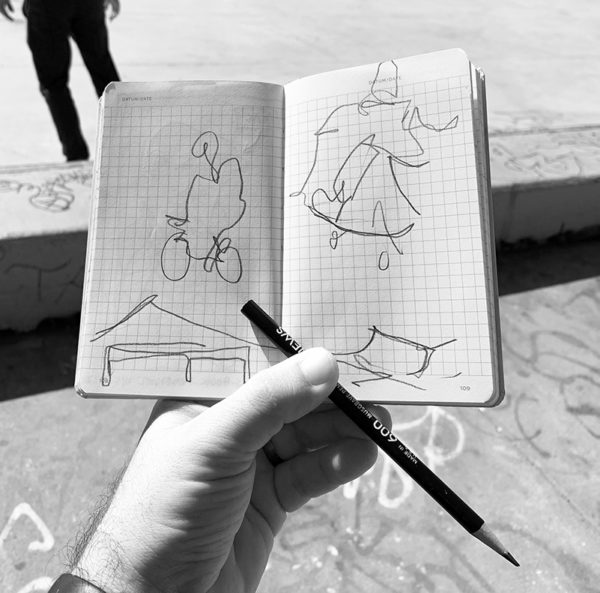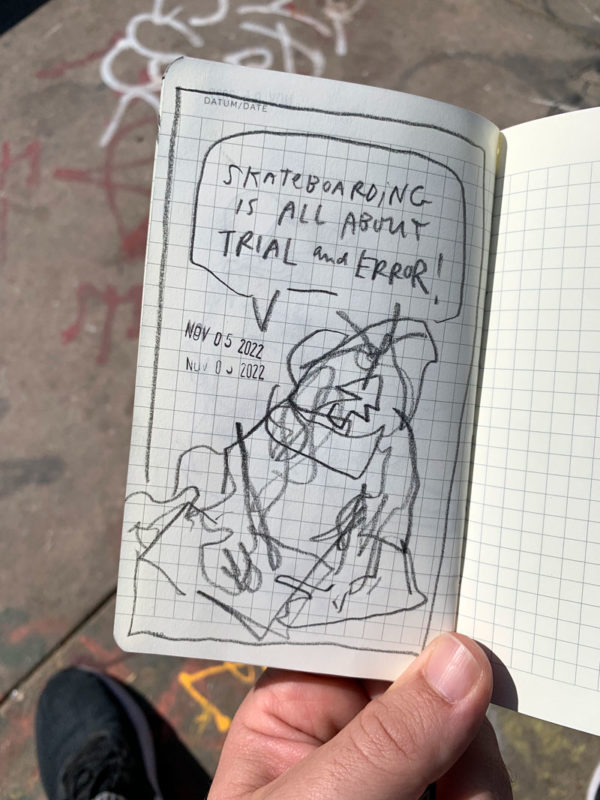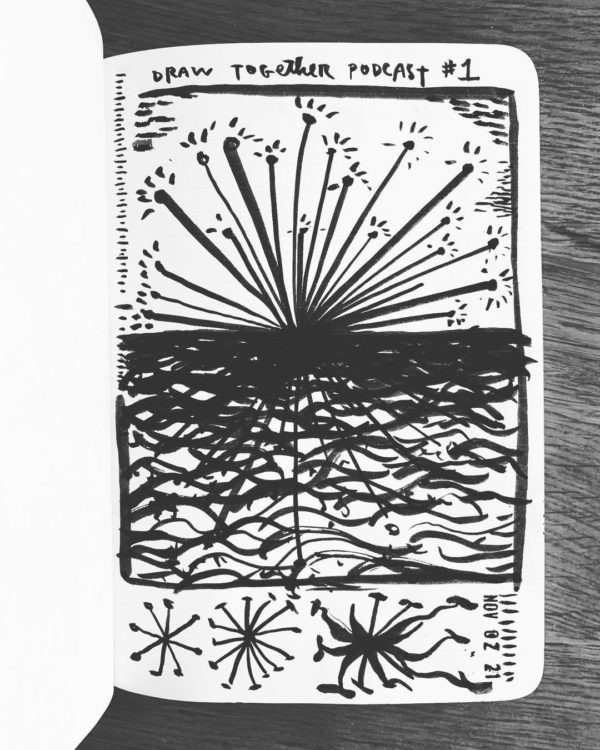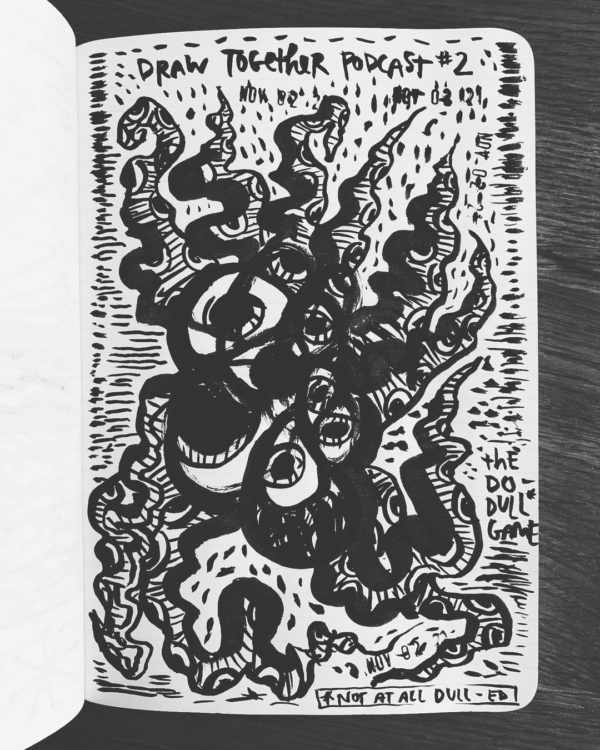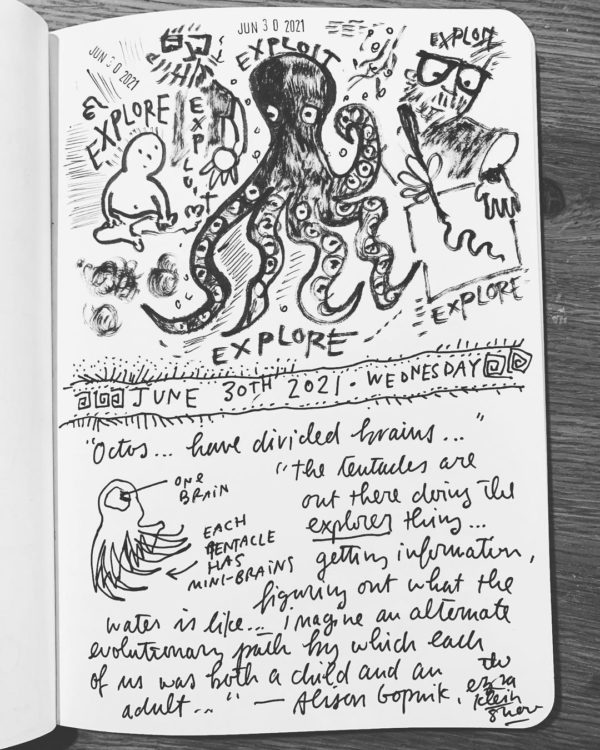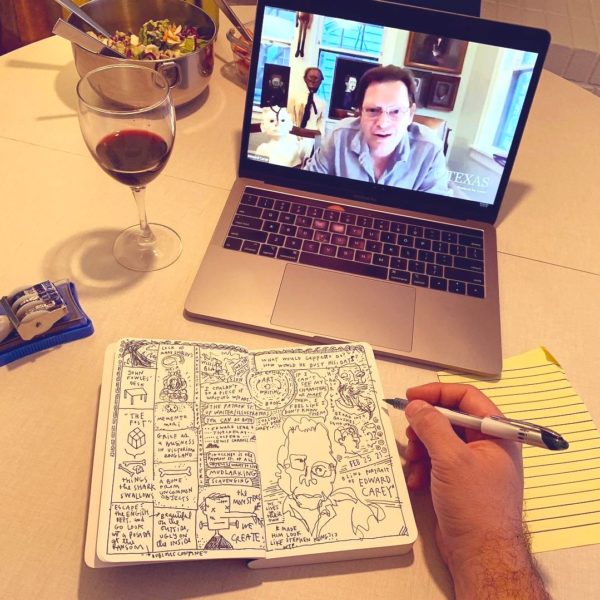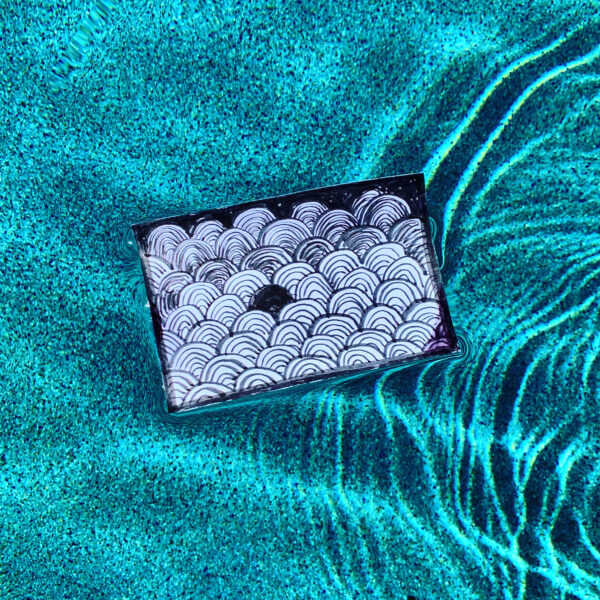
Some advice on the art of imperfection, courtesy of Joan Baez:
If I really don’t like what’s happening, I drop the drawing in the swimming pool. If I’ve gotten too precise about it, the imperfection brings it to life. One of my friends said, “Tell me just one thing that will last. Make as many mistakes as you can.” When you’re trying to make it perfect, trying to make it exactly what you want it to be, then it’s time to drop it into the pool.
That comes from Amanda Petrusich’s recent interview with the singer-songwriter about her new book, Am I Pretty When I Fly? An Album of Upside Down Drawings.
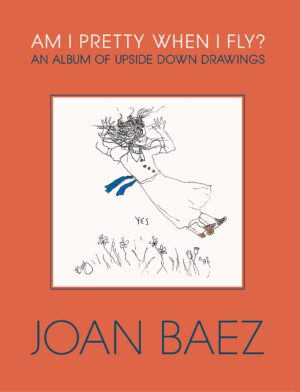 In the introduction to the book Baez writes about her life of drawing, how she “hated school” and “drew my way through the torture.”
In the introduction to the book Baez writes about her life of drawing, how she “hated school” and “drew my way through the torture.”
In her seventies, Baez started painting more and making collages. Decades ago, she says, she arrived “by chance” at making drawings upside down.
Somewhere in my teenage years, probably out of boredom, I taught myself how to write backwards, starting with EINAOJ ZEAB, my new name. I worked my way through the Greek alphabet: AHPLA ATEB, AMMAG, ATLED, and so on. I still write backwards as a form of therapy when I need to get to the root of a blockage or calm the buzzing heat of a panic attack. It’s as though the appropriate wires cross my brain when I write backwards, which allows information otherwise unavailable to surface.
Later, I began drawing with my left hand instead of my right. Like writing backwards, using my nondominant hand opened a different compartment in my brain. I discovered the results were less restrained and more fluid, and therefore more interesting to me.
She then writes about discovering the “tightrope-walk thrill” of blind contour drawing.
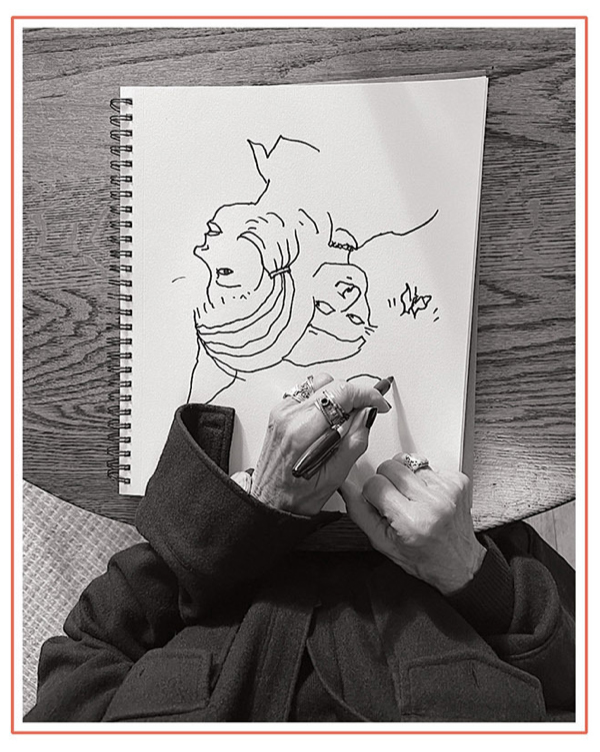
Here’s how she describes her upside-down process:
I start moving my pen or pencil around upside down on the paper — napkin, tablecloth, scrap — as thought the drawing is being made for someone sitting opposite me at the table. Sometimes I have an idea of what I want to draw, but often I just let the pen or pencil start swooping around the page. Once I start to see what’s developing, I begin embellishing, often adding randomly the human form, a floating fish, a flower.
Eventually, I turn the drawing right-side up and see if it needs anything to make it feel complete, in which case I reverse it again and add bits and pieces.
Back right-side up again and the real magic happens: I listen for what the drawing says to me. When a phrase (usually a pun) comes to my mind and resonates, I turn the paper one more time and write the phrase upside down.
Reading all this, I began thinking about Leonardo’s Brain, how he was left-handed, but also ambidextrous, and practiced mirror writing — and how for right-handed people, the left hemisphere controls the right hand, but the right hemisphere controls the left hand.
Baez says she knows there is a neurological explanation for her method, but she says she’s not interested in that. “We don’t need an explanation for every damn thing,” she writes. “There’s a lot to be said for letting go and doing something simply because it feels right… Why tamper with magic?”
Related reading: “Turn it upside down”
